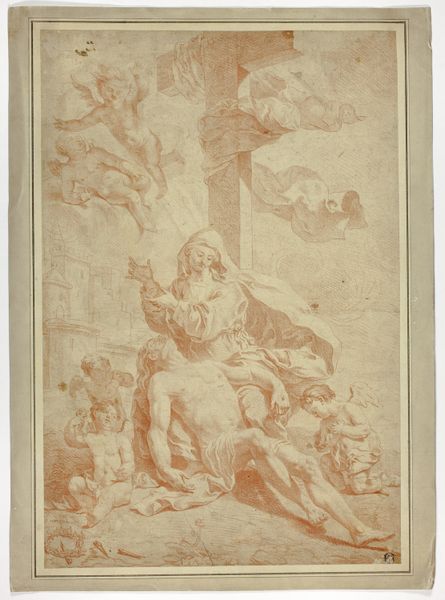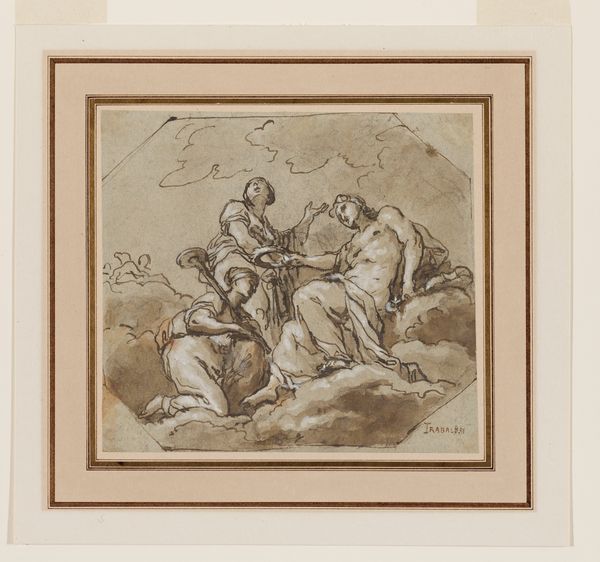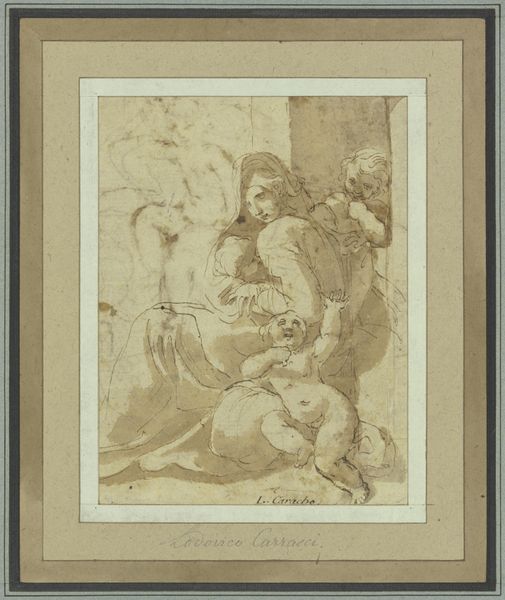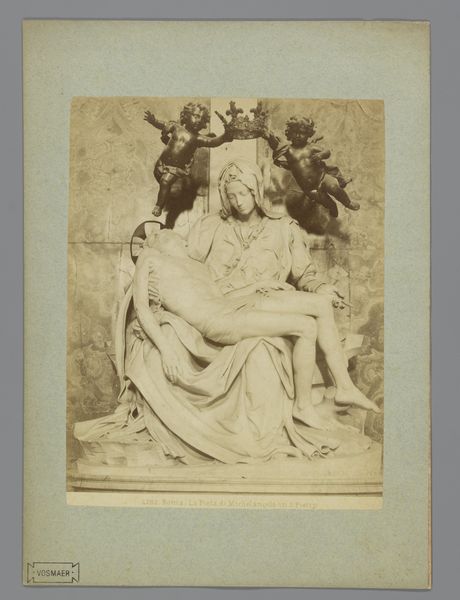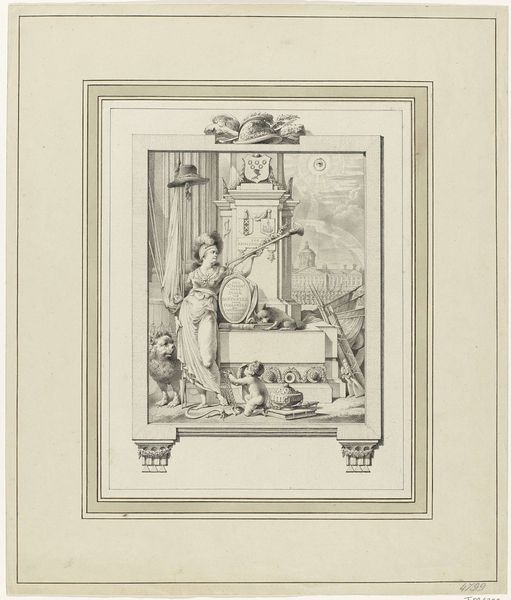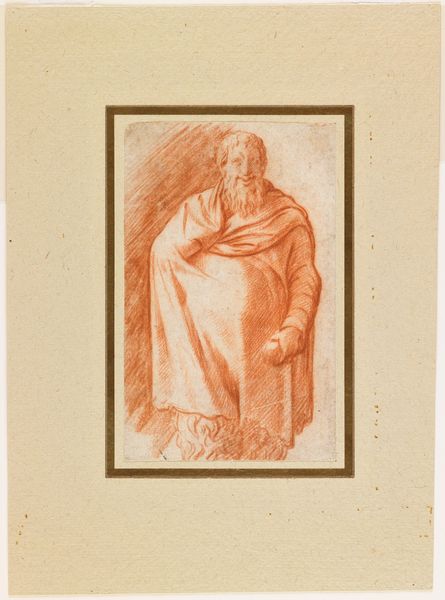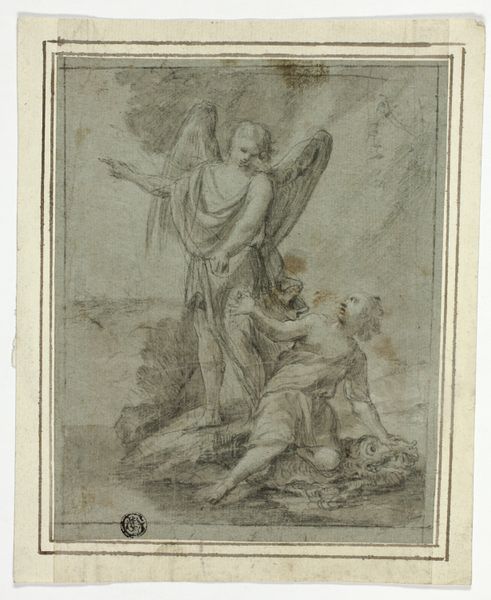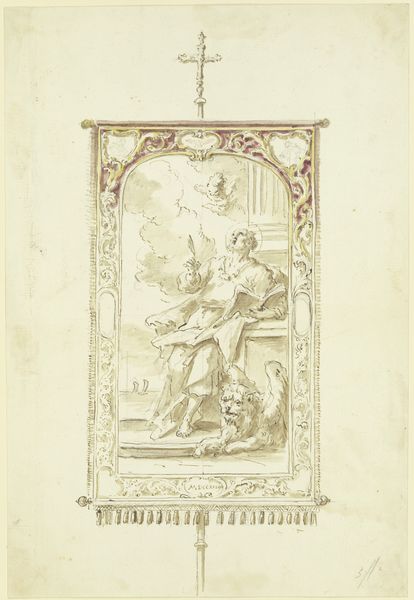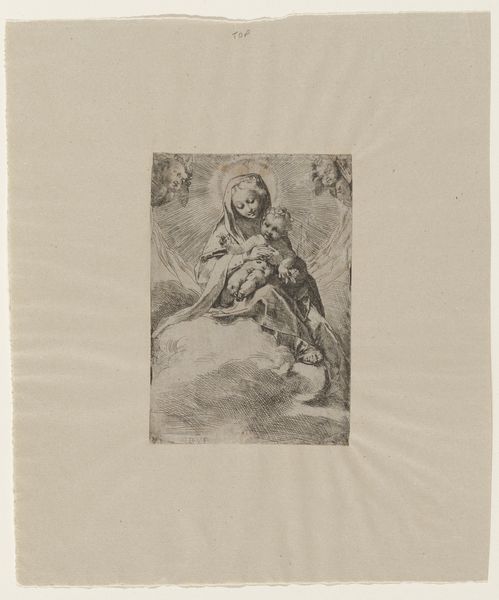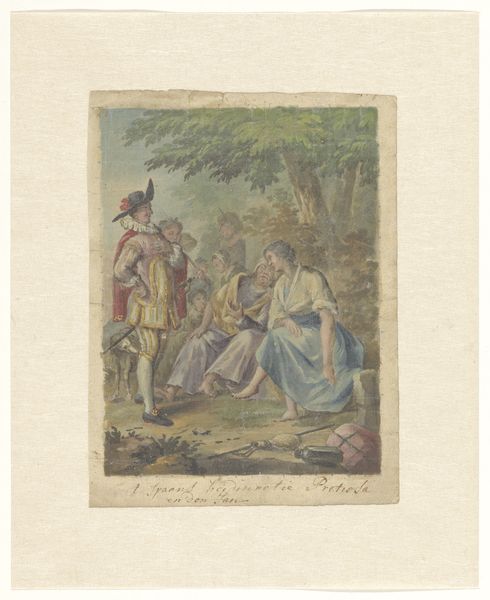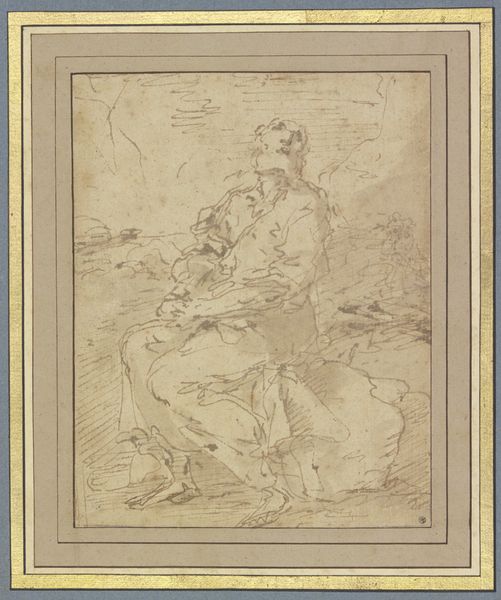
drawing, paper, ink
#
portrait
#
drawing
#
figuration
#
paper
#
11_renaissance
#
ink
#
watercolour illustration
#
italian-renaissance
#
watercolor
Dimensions: height 385 mm, width 285 mm
Copyright: Rijks Museum: Open Domain
Editor: This drawing, "Maria met kind omgeven door putti" or "Mary and Child Surrounded by Putti", is rendered in ink on paper sometime between 1823 and 1869 by Hermanus Johannes van den Hout. I find the grouping of figures quite arresting, especially the framing with cherubic figures. What iconographic interpretations can we draw from this image? Curator: This piece pulls heavily from Renaissance imagery, wouldn't you agree? Notice how Mary is depicted seated on clouds, surrounded by putti, those cherubic figures you mentioned. It's a visual language intended to convey divinity and grace. Editor: Right, and it feels deeply symbolic. What’s the significance of continuously re-imagining the Virgin Mary in art? Curator: Consider Mary as an archetype - she embodies motherhood, compassion, purity. These are concepts cultures return to, and refresh for their own needs. The artist might be attempting to invoke a sense of timeless sanctity or perhaps nostalgia for an idealized past. Think about the specific poses: What emotional dynamics are set by her relation to the Christ child? What about the arrangement of the cherubs? Editor: I see… It is an accessible figure but there is so much tied to the Renaissance artistic and religious contexts. The placement and expression definitely direct my eyes in a particular way. It's almost like a diagram. Curator: Indeed, every element is carefully considered to evoke a specific response. Even in the 19th century, an artist referencing Renaissance motifs signals a desire to tap into those established symbolic meanings. Editor: So it's not just about religious devotion; it's about cultural memory too. Fascinating. Curator: Precisely! It's a dialogue across time, using images to transmit values and beliefs. This close looking enriches how we see its connection with our own lives. Editor: Thank you. This exploration of visual vocabulary is inspiring; I see how symbolic context is so valuable.
Comments
No comments
Be the first to comment and join the conversation on the ultimate creative platform.
